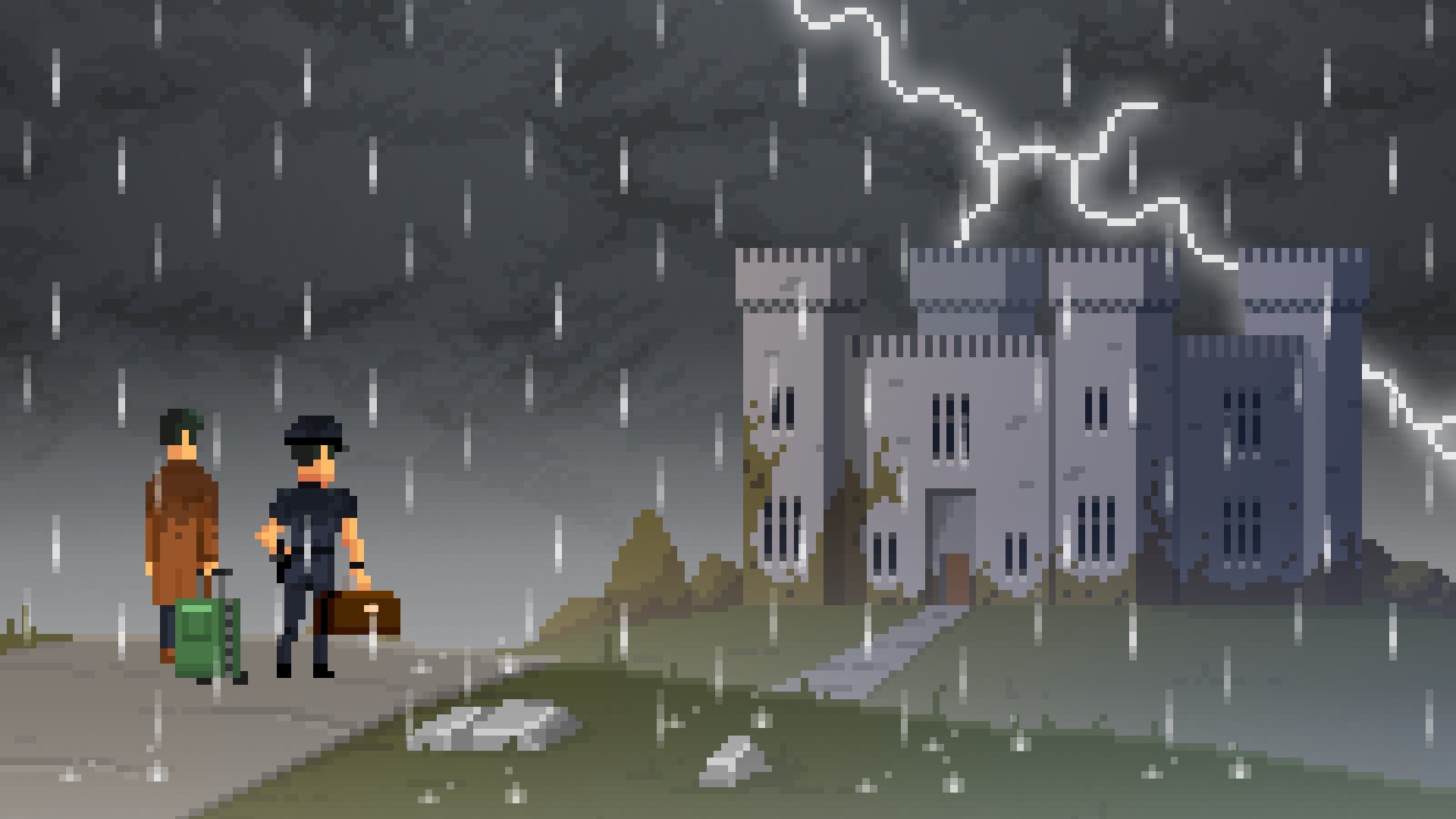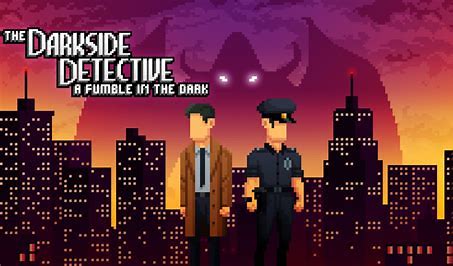Just as the gunplay from Doom to Halo to Call of Duty has deepened and refined over the years, the point-and-click adventure gameplay of The Darkside Detective: A Fumble in the Dark, available now on Xbox One and Xbox Series X|S, has similarly been deepened and refined. But in charting the path from Monkey Island to The Darkside Detective, what’s changed about the design of point-and-click adventure systems over the last 25 years? More importantly, how does the challenge of thinking outside the box to find cool solutions to complex puzzles grow up over all that time?
It’s that challenge at the heart of point and click adventures. You have a toy robot, a knife, and a hotdog bun. Somehow, this is going to help you jumpstart a motorized elephant that’s blocking your path. You need to think through the options at hand and come up with a clever solution to that problem, otherwise, you’ll never progress. And there’s a difficult line to thread to make a satisfying puzzle in the modern era. In a blog on Gamasutra about the game’s design, artist Paul Conway writes: “We watched people play and tried to keep the difficulty level such that it was a challenge to solve something, but not so hard that you jumped to a walkthrough.” You’re not just designing a point and click adventure title devoid of context. You’re designing a point and click adventure title for people who have been playing these games for twenty-five years just as much as you are designing for folks who are picking it up for a few laughs. How do you help players navigate through spaces and cases where they might otherwise be stuck?

One answer is a clever writing trick the game pulls off: giving hints when the player is on the right track. In game design, perceivable consequence is when the game reacts to decisions the player makes in such a way that it communicates useful decision-making information to players. In The Darkside Detective, if a player tries to use an item to solve a puzzle, they will get a small bit of dialogue noting the failure. Usually, this dialogue comes from a small subset of generic lines matched to the theme of the case. But if the item is useful to the puzzle, just not in the way that the player is trying to use it, the failure dialogue will instead be unique, telling the player they’re on the right track, but need to find some other avenue to progress.
It’s a small design decision, but one that creates two clear categories for any item that enters Detective McQueen’s inventory. An item with generic failure text is one that you can disregard for this puzzle. An item with unique failure text is one that’s crucial to it. And creating that category now allows you to orient players in the right direction. Maybe the failure text will mention something that triggers your memory and head back to an item they previously thought was irrelevant. This also allows the puzzles to be more complex and interesting, since you have a better way to bolster failed decisions by players. If the failed decision points them in the right direction, you make it easier for players to make those failed decisions without getting stuck on the puzzle.

And that’s just one instance of a game design decision that marks the progression of the point-and-click adventure since its heyday in the 90’s. Paul writes: “We made a list of puzzles seen in adventure games and marked off those we didn’t like – pixel hunting is gone, no dialogue puzzles, that kind of thing. Minigames were a way to break the mechanical pace and add a sense of reaching a milestone.” If you’re new to the genre or an old diehard for it, you can rest assured that The Darkside Detective will scratch that point-and-click itch for the first time on Xbox! The Darkside Detective and The Darkside Detective: A Fumble in the Dark are both live on Xbox for you to play today!

